Learn About the Invisalign Treatment Process Here
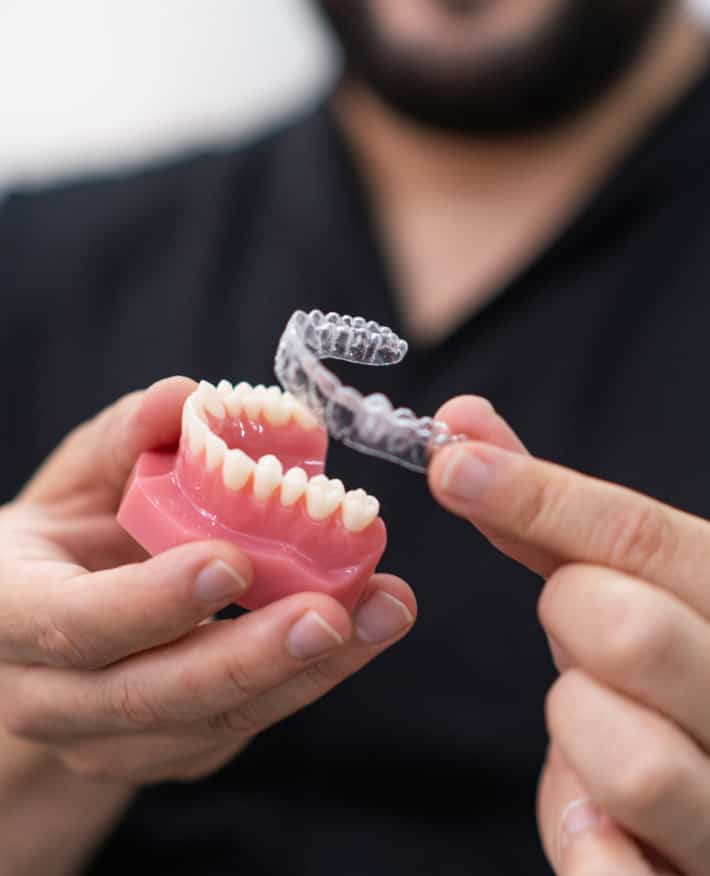
What to Expect During Invisalign Treatment
During Invisalign treatment, patients can expect a tailored journey starting with a consultation and digital scan to create custom aligners. Treatment usually lasts 6–18 months, depending on individual needs. Patients may experience mild pressure as teeth shift, with aligners replaced every one to two weeks. Regular checkups monitor progress towards achieving a beautifully aligned smile.
Ideal Candidates for the Invisalign Treatment Process
- You have mild to moderate orthodontic issues. These may include gaps, overcrowding, or teeth misalignment.
- Patients are dedicated to consistently wearing aligners throughout the day. Aligners should be worn for 20–22 hours each day to achieve the desired results.
- You prefer a nearly invisible treatment option, which is ideal for discreetly maintaining a professional or social appearance.
- You can attend regular appointments to monitor your progress. These visits also allow for aligner replacements as needed.


What are the Benefits of the Invisalign Treatment Process?
The Invisalign treatment process offers an effective approach to achieving a straighter smile while fitting seamlessly into your daily routine. It is a preferred choice for those seeking comfort and discretion in orthodontic care. Below are the benefits of Invisalign:
- Aligners are nearly invisible. They offer a discreet and reliable option for effectively and comfortably straightening teeth over time.
- They are removable and provide flexibility in your daily routine. You can easily eat, brush, and floss without any restrictions.
- The aligners are made from smooth material, providing a more comfortable experience. They help reduce irritation often associated with metal braces.
- Customised treatment plans are tailored to meet your unique dental needs. They are designed to deliver efficient results.
Invisalign Services at Prestige Smiles
At Prestige Smiles, we provide personalised care to help patients achieve beautifully aligned smiles with confidence. Our team is committed to delivering a seamless and comfortable orthodontic experience tailored to your dental needs.
Prestige SmilesInvisalign Services
-
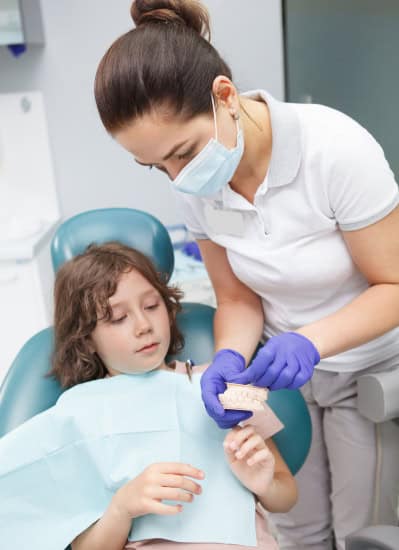
Invisalign for Kids
Invisalign for Kids focuses on early orthodontic intervention, gently guiding teeth into proper alignment during growth. It promotes long-term dental health and helps prevent more complex dental issues later on.
-
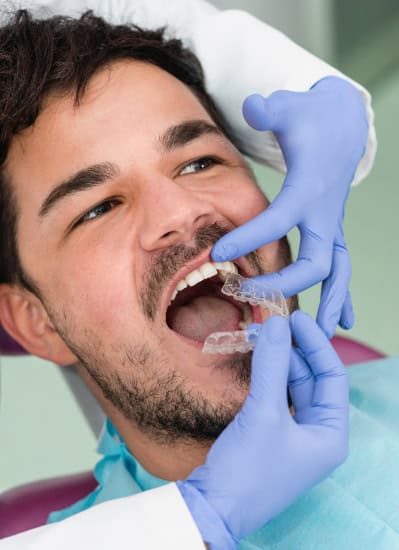
Invisalign for Adults
Invisalign for Adults offers a discreet, comfortable option for achieving straighter teeth without disrupting your lifestyle. It’s ideal for improving dental aesthetics and overall oral health.
-

Invisalign Consultations
Our Invisalign consultations provide a thorough evaluation and customised treatment plan. With professional advice and guidance, discover if Invisalign is the right treatment for your orthodontic needs.
Affordable Dental Care With Flexible Payment Options
-
- Child Dental Benefits Schedule
- Eligible children can access essential dental services under the Australian Government’s Child Dental Benefits Schedule. Designed to support both oral and overall health, CDBS helps make early dental care more accessible for families.
-
- Dental Services for DVA Card Holders
- We proudly support Department of Veterans Affairs (DVA) cardholders, offering access to specific dental treatments to help maintain oral health with convenience and respect for your service.
-
- Afterpay
- Enjoy the flexibility of spreading your dental costs over four equal instalments — interest-free. Afterpay lets you receive the care you need now and pay over time, making dental treatments easier to manage within your budget.
-
- Zip
- With Zip, you can access dental treatments today and pay later with a flexible repayment schedule that suits you. No upfront payments needed.
-
- SuperCare
- SuperCare may assist eligible patients in accessing their superannuation early to fund necessary dental treatments. Our team can guide you through the SuperCare process to make it as smooth as possible.
-
- Pretty Penny Finance
- Looking for personalised dental financing solutions? Pretty Penny Finance offers tailored repayment options to help you manage treatment costs comfortably and confidently.
-
- HBF
- As an HBF-preferred provider, we offer quality dental care to HBF members, helping to reduce out-of-pocket expenses across a range of treatments.
-
- CBHS
- We proudly partner with CBHS Health Fund to deliver affordable, personalised dental care for members, supporting better oral health outcomes.
-
- HIF
- As a preferred provider for HIF members, we make it easier to access cost-effective dental services while maintaining the highest standards of care.
Explore Our Smile Gallery: Stunning Before & After Transformations
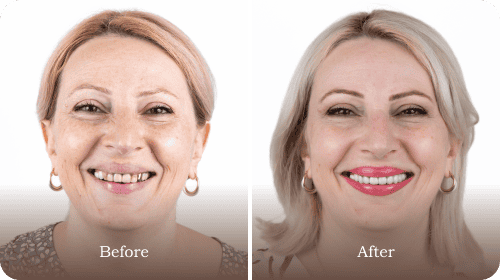
- Dental Crowns
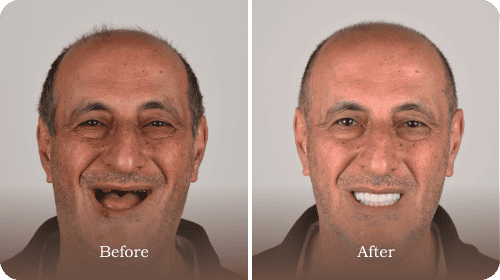
- Dental Implants
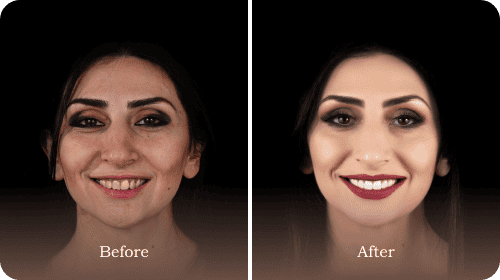
- Veneers
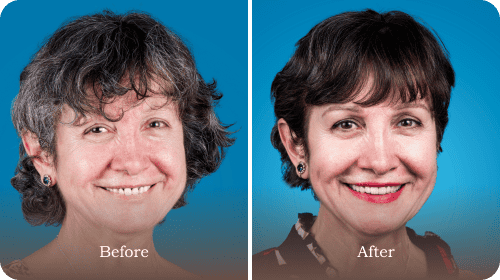
- Dental Crowns
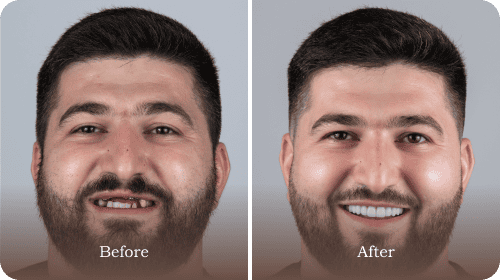
- Dental Implants
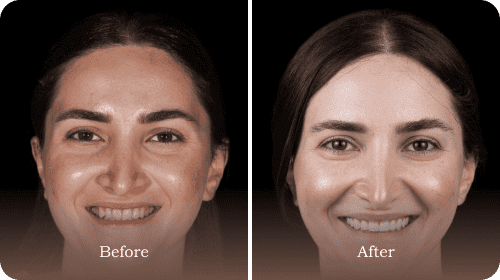
- Veneers
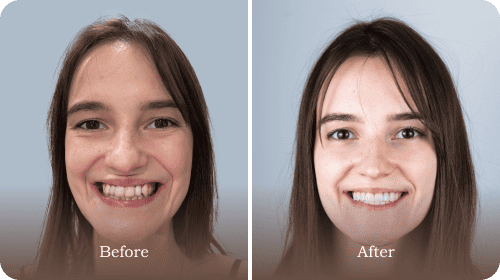
- Dental Crowns
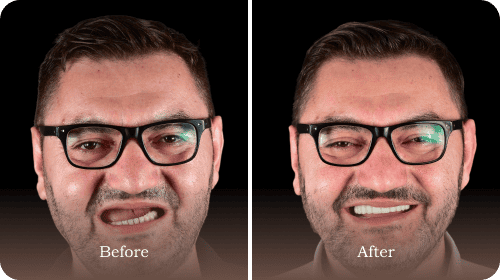
- Dental Implants
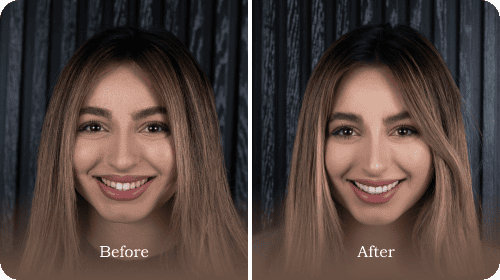
- Veneers
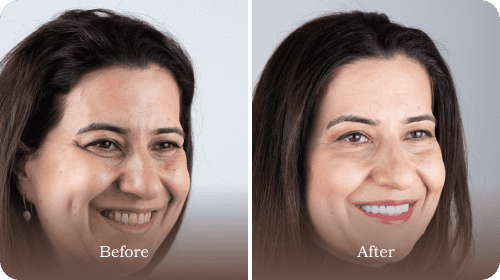
- Dental Crowns
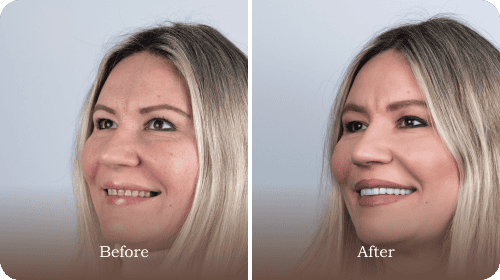
- Dental Implants
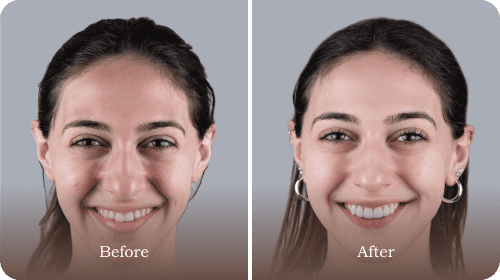
- Veneers
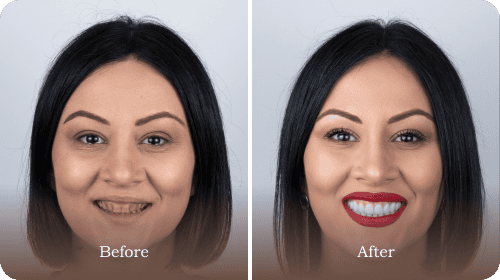
- Dental Crowns
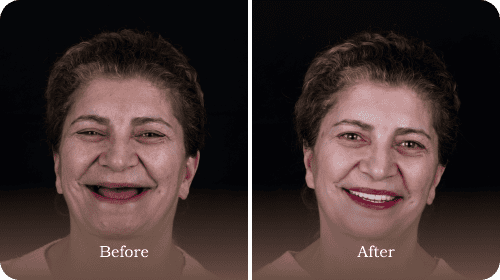
- Dental Implants
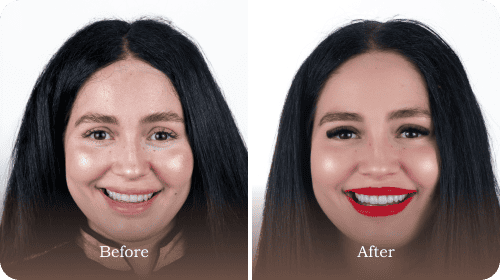
- Veneers
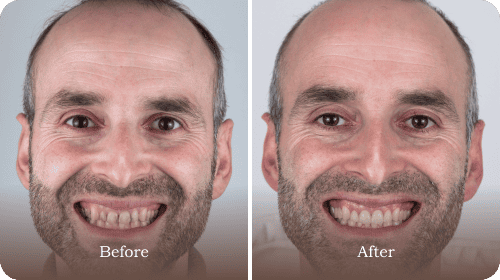
- Dental Crowns
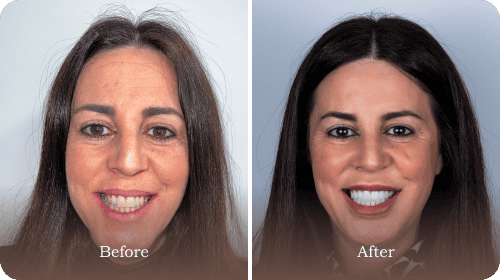
- Veneers
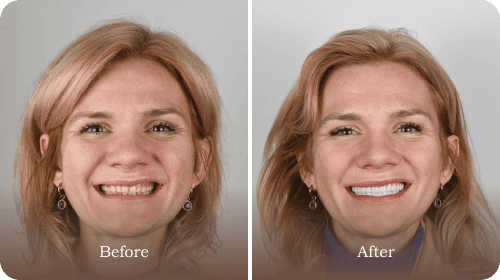
- Veneers
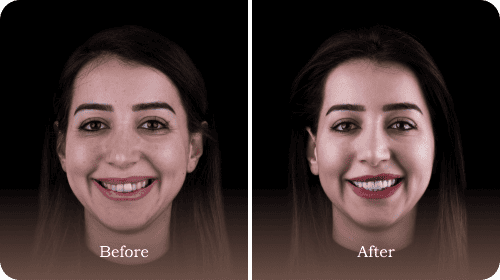
- Veneers
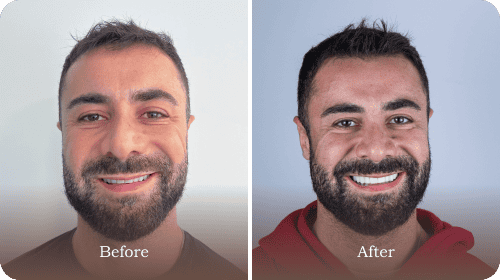
- Veneers
FREQUENTLY ASKED QUESTIONS
What are the steps to getting Invisalign?
Invisalign aligners process involves a structured process designed to deliver effective treatment tailored to meet your individual dental needs. Here is a breakdown of the process:
- Initial Consultation:
During your visit, the dentist will examine your mouth and discuss your orthodontic goals. The visit allows you to decide if Invisalign is a suitable treatment for you. - Detailed Examination and Scans: Advanced imaging technologies, such as 3D scans or dental impressions, will create an accurate digital model of your teeth. The digital model is essential for designing your custom aligners accurately.
- Personalised Treatment Plan:
Using the scans, a detailed treatment plan is created, showing the step-by-step movement of your teeth throughout the process. You’ll also get a preview of your expected results. - Receiving Your Aligners: Your dentist will give you your custom aligners and detailed instructions on how to wear them properly. Each set of aligners is worn for one to two weeks.
- Regular Checkups:
Periodic dental visits are scheduled to monitor your progress and make necessary adjustments. During these visits, you will receive a new set of aligners. - Completion and Retention:
Your teeth will be positioned exactly as intended after your treatment. You may then be fitted with a retainer to maintain your results.
By following these steps, you can achieve a straighter smile with Invisalign while enjoying a comfortable and discreet orthodontic experience. Scheduling a consultation is the first step in starting your Invisalign treatment process and transforming your smile!
Do I need to wear a retainer after Invisalign?
After completing the Invisalign aligners process, many patients wonder if wearing a retainer is necessary. Here is an explanation to help you understand why retainers are an important part of maintaining your results:
- Retainers prevent teeth from shifting back. After Invisalign aligns your teeth, there is a natural tendency for them to shift back to their original positions. Proper retention is needed to maintain your new smile over time.
- They help maintain long-term results. Wearing a retainer helps keep your teeth in their new position, preserving the results achieved with Invisalign treatment.
- Initial wear may be more frequent. After treatment, wearing your retainer most of the time helps stabilise results during the initial months.
- Long-term wear is usually required at night. After the initial phase, most patients only need to wear their retainer during sleep to maintain their smile.
- Skipping your retainer can undo progress. Without consistent use, you risk needing further orthodontic treatment in the future.
Wearing your retainer as instructed is important for maintaining your straighter smile and protecting your orthodontic investment. Always reach out to your dentist with any concerns about retainer wear or maintenance.
What are the conditions for getting Invisalign?
Invisalign is a popular orthodontic treatment option designed to address a wide range of dental alignment concerns. Below are the common conditions that determine if someone is a suitable candidate for the Invisalign aligners process:
- Mild to Moderate Dental Misalignment:
Invisalign is ideal for patients with mild to moderate crowding, spacing, or misaligned teeth. - Bite Issues:
Conditions such as overbite, underbite, crossbite, and open bite can often be addressed with Invisalign, depending on their severity. - Good Oral Health:
Candidates should have healthy teeth and gums without active cavities or unmanaged gum disease. Any underlying dental issues must be addressed before starting Invisalign treatment. - Commitment to Wearing Aligners:
Invisalign requires wearing aligners for 20 to 22 hours per day. Individuals who can commit to this routine are good candidates. - Age Suitability:
Invisalign is recommended for teens and adults with fully developed adult teeth, but Invisalign First is suitable for children.
Consulting with a dentist is the most effective way to determine if Invisalign is right for your specific dental needs. Each treatment plan is personalised to align with your oral health and lifestyle goals.
How long does the Invisalign process take?
The Invisalign treatment timeline usually ranges between 12 and 18 months, depending on the complexity of your dental alignment needs. Some cases may be completed in as little as six months for minor adjustments. However, the exact duration varies and is determined during your personalised consultation with your dentist.
Regular progress checks every six to eight weeks help keep your treatment on track and allow for any necessary adjustments. Consistently wearing your aligners for 20 to 22 hours daily is required for optimal results. Your dentist will guide you through every step to provide a smooth and efficient treatment experience.
How soon can I start seeing results with Invisalign?
If you’re considering Invisalign treatment, one common question is how quickly you’ll notice results. The Invisalign treatment timeline can vary from person to person. Here’s a detailed breakdown of what to expect when noticing changes in your smile:
- Early Changes in Just Weeks:
Patients often notice slight improvements in teeth alignment within 2 to 3 weeks of consistently wearing their aligners. - Significant Progress by a Few Months:
Noticeable smile changes often appear by the third or fourth month as teeth gradually shift into their new positions. - Depends on the Complexity of Your Case:
The speed of visible results largely depends on the severity of your orthodontic issues. Mild misalignments may show results sooner, while more complex cases may take a bit longer. - Commitment to Wearing Aligners:
Following the recommended wear time of 20 to 22 hours daily is essential to seeing results as quickly as possible. - Regular Check-ins for Monitoring:
Your dentist will monitor your progress to keep your treatment on track and help you achieve the desired results.
By following your dentist’s guidance and wearing your aligners consistently, you’ll start noticing positive changes sooner than you think. Invisalign offers a convenient and effective way to achieve your dream smile over time.
Will Invisalign take longer than braces?
Invisalign treatment time depends on the complexity of the case and is often comparable to traditional braces. Simple cases may be completed faster with Invisalign, but more complex adjustments could take a similar duration. A consultation with a dentist can provide a more accurate estimate based on individual needs.
Traditional braces are sometimes preferred for severe misalignment, as they can address complex issues more predictably in certain cases. Invisalign offers the advantages of convenience and aesthetics, which many patients find appealing during their invisalign journey. The treatment duration ultimately varies, making professional advice essential to determining the most suitable option.
Do I need to brush my teeth before Invisalign?
Good oral hygiene during your Invisalign treatment plan is vital for achieving optimal results and maintaining overall dental health. Brushing your teeth before wearing your aligners is an important step in your routine. Here’s what you need to know:
- Remove food particles and plaque:
Brushing before wearing Invisalign removes food debris and plaque, preventing cavities and gum issues caused by trapped particles. - Prevent odour and staining:
Clean teeth prevent unpleasant smells and potential staining of the aligners, keeping your mouth fresh. - Minimise bacteria growth:
Brushing reduces bacteria build-up, promoting healthier teeth and gums throughout the treatment. - Avoid aligner damage:
Neglecting to brush may result in debris scratching or damaging the aligners over time. - Protect your investment:
Clean teeth help keep your Invisalign treatment on track, supporting your journey to achieve your desired smile.
Brushing your teeth before wearing your Invisalign aligners is an important step in maintaining good oral health. It also helps optimise your orthodontic care.
How do I know if my teeth are moving with Invisalign?
Several signs can help you determine if your teeth are moving as expected with Invisalign during treatment. Here’s what you need to know:
- Aligner Fit:
Your Invisalign aligners should gradually fit more snugly over time. If they feel loose towards the end of their wear period, it may indicate progress in your treatment. - Tooth Mobility:
Slight tooth looseness is normal during Invisalign as your teeth shift into their new positions. - Tracking Progress:
Invisalign treatment plan includes regular check-ins with your dentist. They will assess your progress to confirm that your teeth are moving as planned. - Visual Changes:
Over time, you’ll notice a visible improvement in your teeth’s alignment when you compare photos or check in the mirror. - Discomfort or Pressure:
Mild discomfort or pressure when switching aligners is common, indicating your teeth are moving as part of the treatment. - Attachments Staying in Place:
If you have Invisalign attachments, they should remain intact and help guide your teeth into the proper positions.
Regular consultations with your dentist will help keep your treatment on track and allow for adjustments if necessary. Always reach out to your dental professional if you have concerns about your progress.
How long will I need to wear a retainer after Invisalign?
After completing your Invisalign treatment timeline, you will need to wear a retainer to maintain your newly aligned teeth. Typically, retainers are worn full-time for the first few months to prevent teeth from shifting. After this period, most patients transition to wearing their retainers only at night.
The duration of retainer use varies depending on your individual orthodontic needs and treatment plan. Many people continue wearing retainers nightly indefinitely to preserve their results. Your dentist will provide specific guidance tailored to your situation, supporting long-term success.
Will my teeth stay straight without a retainer?
Keeping your teeth straight after orthodontic treatment, like Invisalign, requires consistent care. Here’s a detailed explanation of why retainers are important and what happens without them:
- Teeth naturally shift over time:
Without a retainer, teeth may shift back to their original positions due to natural forces like chewing and jaw growth. - Orthodontic treatment results need maintenance:
After Invisalign, your teeth are still adjusting to their new positions. Retainers help stabilise them during this period. - Bone and tissue need time to settle:
It takes time for the surrounding bone and gum tissues to solidify around the newly aligned teeth. Retainers play a significant role in holding the teeth in place during this phase. - Skipping a retainer can undo progress:
Even if your teeth feel stable initially, skipping your retainer may lead to crowding or misalignment over time. - Retainers are a long-term commitment for lasting results:
Most people need to wear retainers nightly or as advised by their dentist to maintain their straight smile.
Using a retainer is an essential part of keeping your teeth straight after Invisalign treatment. If you have concerns or need guidance on wearing a retainer, speak with your dentist for personalised advice.
What happens if I forget to wear my retainer?
Forgetting to wear your retainer can affect the results of your Invisalign treatment plan. Understanding the potential impacts can help you get back on track. Here’s what can happen if you forget to wear your retainer:
- Teeth may begin to shift:
Without a retainer, your teeth may shift back to their original positions, especially shortly after completing Invisalign treatment. - Alignment changes may become noticeable:
Even short periods without wearing your retainer could cause minor misalignments, which may require additional adjustments. - Treatment progress may be lost:
Consistent retainer use helps maintain the investment you made in your smile, so skipping wear can affect the long-term results. - You might need new treatment:
If significant shifting occurs, you may need additional orthodontic work to restore alignment, which can be costly and time-consuming.
Wear your retainer as instructed by your dentist to maintain your smile and achieve the results of your treatment. If you’ve forgotten to wear it, book an appointment to check your alignment and discuss the next steps.
How many hours per day should I wear Invisalign?
Invisalign is designed to be a convenient and effective orthodontic treatment, but its success relies on consistent wear. Here is a clear breakdown of how many hours per day you should wear Invisalign:
- Recommended wear time:
Invisalign aligners should be worn for 20 to 22 hours per day to achieve optimal results. - Meals and oral hygiene:
You should remove the aligners only when eating, drinking anything other than water, or brushing and flossing your teeth. - Importance of consistency:
Wearing Invisalign for fewer hours than recommended may delay progress and extend the overall treatment duration. - Sleeping hours count:
Since Invisalign is worn during sleep, this already accounts for a significant portion of the required daily wear time. - Adjusting to routines:
Setting reminders to reinsert your Invisalign aligners after meals helps you effectively meet the recommended daily wear time.
Wearing Invisalign aligners as directed is key to achieving your desired results within the estimated treatment time. If you have any concerns or questions about wearing them, consulting your dentist can provide personalised guidance.
Discover Exceptional Dental Care. Schedule Your Visit With Us Today!
Trust us with your dental health and experience a welcoming environment, professional treatments, and personalised care. Schedule your appointment today and discover the impact we can have on enhancing your smile.